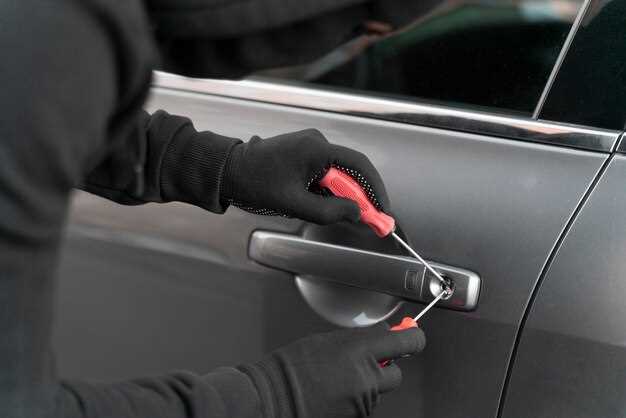
When driving, the last thing you want is a chip in your windshield. Not only can it impair your visibility, but it can also lead to more extensive damage if left untreated. Fortunately, repairing a windshield chip is a manageable task that you can do yourself with the right tools and techniques. This guide will walk you through the essential steps and provide valuable tips to ensure a successful repair.
Before diving into the repair process, it’s important to understand that timing is crucial. Addressing a chip promptly increases the likelihood of a successful fix. If the chip is not larger than a quarter and has not spread, you can usually handle the repair at home. Gather all necessary materials, including a repair kit, and ensure that you are working in a clean, well-lit environment.
Throughout this article, we’ll cover the step-by-step instructions for repairing a windshield chip, as well as tips for avoiding common mistakes. By following these guidelines, you can save time, money, and hassle while restoring the integrity of your windshield. Let’s get started on your DIY project!
Gathering the Right Materials and Tools for Windshield Chip Repair

To successfully repair a chip in your windshield, it’s essential to gather the necessary materials and tools beforehand. This preparation ensures that the process is efficient and effective, reducing the risk of further damage to the glass.
The first item you’ll need is a windshield repair kit, which typically includes a resin or adhesive specifically formulated for glass. Look for a kit that contains a clear resin, as this will ensure that the repair is less visible once completed. Make sure the resin can effectively fill cracks and has good bonding properties.
Along with the repair kit, you should have a good quality razor blade or sharp knife for cleaning the chip area and applying the resin. A small drill bit may also be beneficial for creating a tiny entry point in deeper chips, helping the resin to penetrate fully.
Additionally, you will require a clean cloth for wiping the windshield before and after the repair. Keeping the area clean prevents dust and debris from interfering with the adhesion of the resin. A plastic squeegee or card can also help smooth out the repair and remove any excess material.
It’s important to have masking tape on hand to mark off the repair area and keep the resin contained, as well as to protect adjacent parts of the windshield from any spills. A pair of gloves is advisable to keep your hands clean while working with the resin, as well as to avoid contamination.
Finally, depending on the kit you purchase, you might need a small UV light or access to sunlight to cure the resin effectively. Verify if your kit includes one or if you’ll need to source it separately.
By ensuring you have all these materials and tools ready, you’ll be well-prepared to tackle the windshield chip repair, enhancing the likelihood of a successful restoration.
Step-by-Step Guide to Filling and Sealing the Chip
To effectively repair a chip in your windshield, follow these detailed steps to ensure a successful filling and sealing process.
Step 1: Gather Your Materials
Before starting, assemble all necessary tools and materials. You will need a windshield repair kit, a clean cloth, some rubbing alcohol, and a razor blade. Ensure the area is well-lit to facilitate visibility during the repair.
Step 2: Clean the Area
Using the clean cloth and rubbing alcohol, thoroughly clean around the chip. This removes any dirt, dust, or debris that may interfere with the adhesive bond. Allow the area to dry completely before proceeding.
Step 3: Prepare the Injection Tool
Follow the instructions included with your windshield repair kit to prepare the injection tool. This typically involves attaching the suction cup and the resin syringe according to the manufacturer’s guidelines.
Step 4: Position the Injection Tool
Place the suction cup directly over the chip, ensuring it is centered. Press down firmly to create a vacuum seal. This will help draw the resin into the chip, which is crucial for a proper repair.
Step 5: Inject the Resin
Slowly pull the handle of the syringe to inject the resin into the chip. Monitor the flow to ensure the chip is filled completely. Allow the resin to settle into the damaged area for a minute, helping prevent air bubbles from forming.
Step 6: Release the Vacuum
After the resin has settled, release the suction by carefully loosening the suction cup. This allows the resin to flow into the chip without any vacuum interference.
Step 7: Cure the Resin
Cover the chip with a curing film included in your kit. Expose the area to sunlight or use a UV light if provided. The resin typically requires several minutes to cure effectively, depending on the type of resin and environmental conditions.
Step 8: Remove Excess Resin
Once the resin is cured, utilize a razor blade to gently scrape away any excess resin that has overflowed around the chip. Be careful not to scratch the glass surface during this process.
Step 9: Final Inspection
Examine the repair to ensure the chip is filled and sealed adequately. If needed, repeat the injection process for any remaining air pockets or if the chip is still visible. A successful repair should leave a nearly invisible mark.
Step 10: Clean and Maintain
Finally, clean the windshield again to remove any residues from the repair process. Regularly check the repaired area for any signs of new damage or deterioration to maintain the integrity of your windshield.
Common Mistakes to Avoid During Windshield Chip Repair

When attempting a DIY windshield chip repair, several common mistakes can lead to subpar results or even worsen the damage. Being aware of these pitfalls can help ensure a successful repair.
1. Ignoring the Weather Conditions: Repairing a windshield chip in unsuitable weather can compromise the effectiveness of the resin. Avoid performing repairs in rainy or very cold conditions, as moisture can impair adhesion and resin curing. Ideally, work in a dry, warm environment.
2. Failing to Clean the Area: Cleaning the chip thoroughly before applying the repair resin is crucial. Dirt or debris trapped in the crack can prevent the resin from adhering properly. Use a glass cleaner and a lint-free cloth to ensure the area is spotless.
3. Using Incompatible Repair Kits: Not all repair kits are created equal. Using a kit that doesn’t match your windshield type or the severity of the chip can lead to ineffective repairs. Always read product descriptions and choose a kit that specifically addresses the needs of your situation.
4. Skipping the Necessary Tools: Attempting a repair without essential tools can lead to incomplete work. Ensure you have all required items outlined in the repair kit, including a vacuum tool if necessary, to achieve the best results.
5. Overestimating Skill Level: DIY repairs can be straightforward, but they require a basic understanding of the process. If you lack confidence or experience, consider consulting a professional before attempting the repair to avoid causing additional damage.
6. Rushing the Process: Patience is key during repair. Allow adequate cure time for the resin, as rushing can result in air bubbles or incomplete hardening. Follow the manufacturer’s instructions on curing times to ensure a solid repair.
7. Neglecting Safety Precautions: Repairing a windshield chip involves working with glass, which can shatter unexpectedly. Always wear protective eyewear and gloves. If the crack is deep or located in a critical area, seek professional help to avoid injury.
By avoiding these mistakes, you can improve your chances of successfully repairing a windshield chip and maintaining the integrity of your vehicle’s safety features.

